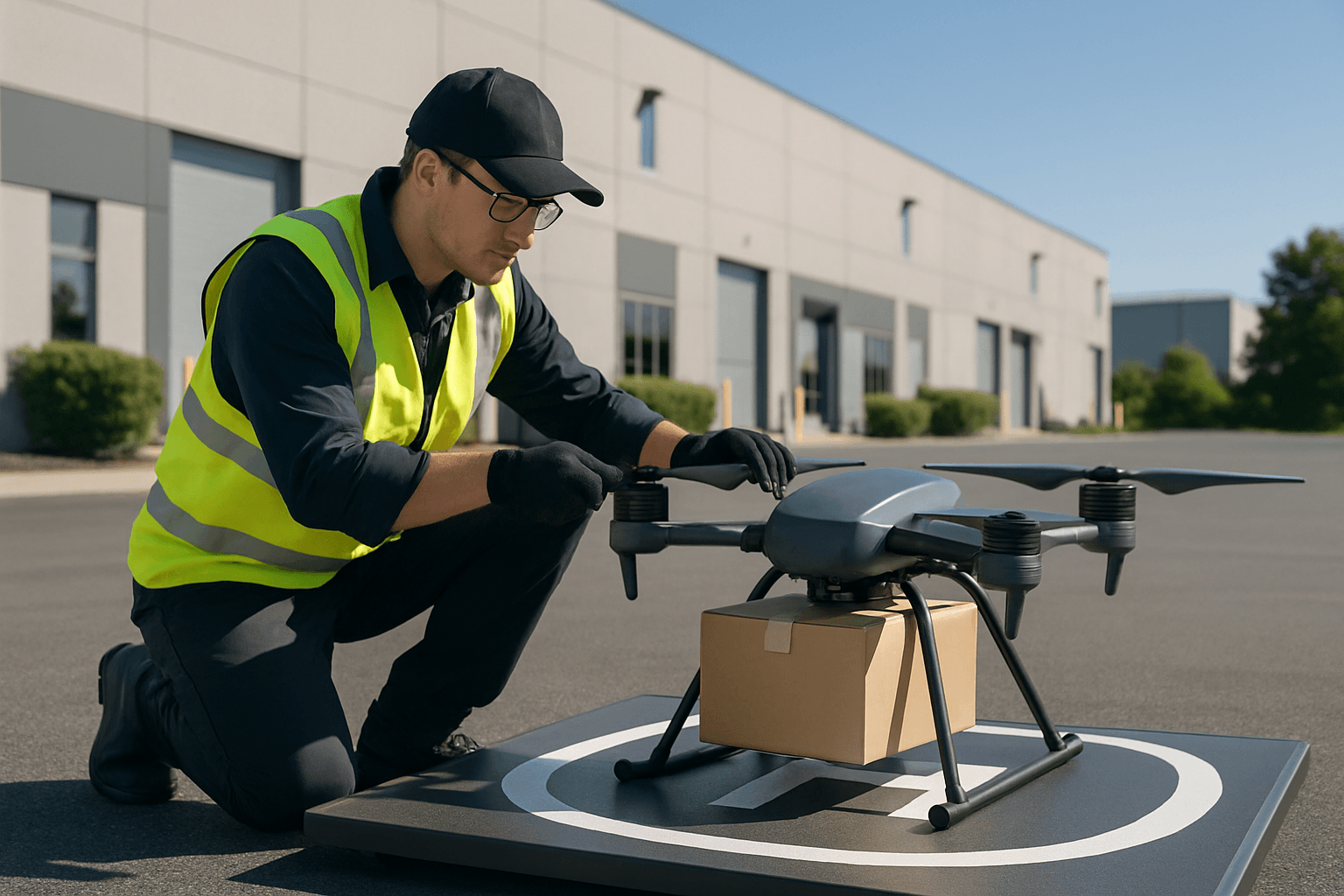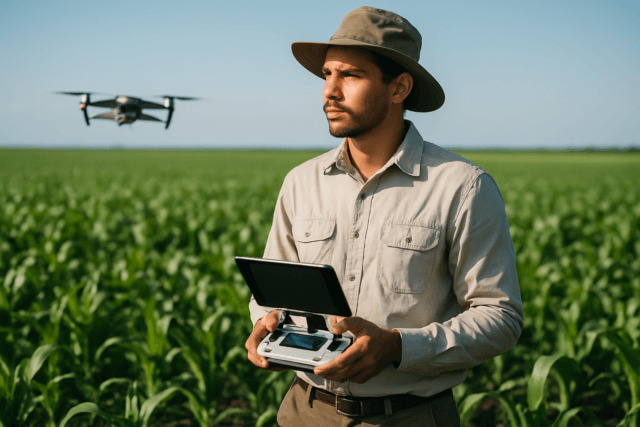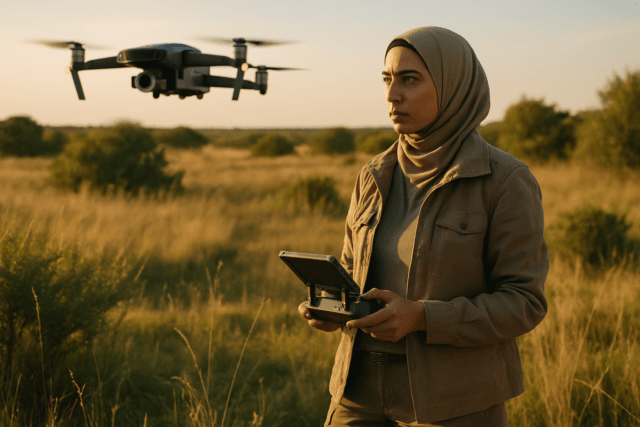Drone delivery, once a futuristic concept, is rapidly transforming into a tangible reality, poised to revolutionize last-mile logistics and redefine how goods reach consumers. Propelled by technological advancements and accelerated by global events, these unmanned aerial vehicles (UAVs) are making significant inroads into commercial operations, promising unparalleled speed, efficiency, and environmental benefits.
The Genesis and Growth of Drone Delivery
The idea of airborne package delivery has captivated innovators for decades, but it is only in recent years that the confluence of advanced drone technology, robust navigation systems, and evolving regulatory frameworks has allowed it to take flight. Initially deployed for military surveillance, drones have since diversified their applications, with commercial delivery emerging as a particularly impactful use case. The COVID-19 pandemic significantly accelerated this trajectory, highlighting the need for contactless and efficient delivery solutions, leading to an over 80% increase in global drone package deliveries in 2022.
Today, the drone package delivery market is experiencing rapid growth, with projections estimating its size to reach USD 8 billion by 2027 at a compound annual growth rate (CAGR) of 41.8%. By 2035, the serviceable addressable market in the United States alone is projected to reach $5 billion, with approximately 1.5 billion annual deliveries. This expansion is driven by both consumer demand for faster services and the inherent advantages drones offer over traditional ground-based methods.
The Compelling Advantages of Airborne Logistics
The appeal of drone delivery stems from a multifaceted array of benefits that address many inefficiencies of conventional logistics:
Unrivalled Speed and Efficiency
Drones can bypass ground traffic congestion, navigate direct routes, and access challenging terrains, significantly reducing delivery times. This speed is particularly critical for time-sensitive items like medical supplies or perishable goods. Their autonomous operation further enhances efficiency, enabling continuous, round-the-clock service without the need for human breaks or shifts.
Significant Cost Reductions
While initial investment in drone fleets and infrastructure can be substantial, the long-term operational costs are notably lower than traditional vehicle-based delivery. Drones can significantly reduce expenses related to fuel, vehicle maintenance, and labor, with some analyses suggesting operational costs for drone delivery services can be 40% to 70% lower than vehicle delivery models. Wing’s research indicates businesses could save up to 60% on delivery costs by switching to autonomous systems.
Enhanced Accessibility and Reach
One of the most transformative benefits of drone delivery is its ability to reach remote, rural, or hard-to-access areas that traditional vehicles may struggle to serve due to a lack of infrastructure or difficult terrain. This capability is vital for providing essential goods, humanitarian aid during disaster relief efforts, or medical supplies to underserved communities.
Environmental Sustainability
Electric-powered drones offer a promising avenue for reducing the carbon footprint of delivery services. They consume less energy than traditional methods, especially for last-mile deliveries, and produce zero direct operational emissions. Studies suggest that drone delivery of small packages can significantly reduce greenhouse gas emissions compared to traditional trucks. For instance, Wing highlights a 90% reduction in carbon emissions per delivery mile, while Zipline claims a 98% reduction in delivery emissions compared to using cars for medicine deliveries. This positions drone delivery as a critical tool for businesses aiming to meet sustainability goals.
Contactless and Secure Delivery
The autonomous nature of drone delivery facilitates contactless transactions, a feature that gained prominence during the COVID-19 pandemic. Furthermore, advanced systems and precision guidance, often leveraging GPS and sensors, ensure packages are delivered accurately to designated drop-off points.
Diverse Applications Across Industries
Drone delivery is proving its versatility across a wide range of sectors:
E-commerce and Retail
Major e-commerce and retail giants like Amazon, Walmart, and Google (through Wing) are at the forefront of implementing drone delivery for consumer goods, groceries, and parcels, aiming to achieve rapid, often same-day, delivery.
Healthcare and Medical Supplies
Perhaps one of the most impactful applications is the delivery of critical medical supplies such as blood, vaccines, pharmaceuticals, and test samples, especially to remote clinics or in emergency situations. Companies like Zipline and Matternet have pioneered this, conducting operations in countries across Africa, Europe, and the US.
Food Delivery
Services like Uber Eats and Flytrex have explored or implemented drone delivery for prepared meals and groceries, emphasizing speed and convenience for consumers.
Disaster Relief and Remote Logistics
Drones can swiftly deliver emergency supplies to disaster zones or hard-to-reach locations where traditional infrastructure is compromised or non-existent, without risking human lives.
Overcoming the Obstacles: Challenges and Solutions
Despite the immense potential, widespread adoption of drone delivery faces several significant hurdles:
Regulatory Landscape
The most substantial challenge remains the complex and evolving regulatory environment. Agencies like the Federal Aviation Administration (FAA) in the US and the Civil Aviation Authority (CAA) in the UK have strict rules, primarily Part 107, governing commercial drone operations, often requiring drones to be flown within visual line of sight (BVLOS is typically restricted without waivers) and below certain altitudes. Achieving Beyond Visual Line of Sight (BVLOS) operations, crucial for scalable delivery networks, is a long and complex process requiring specific certifications and exemptions.
Technological Limitations
Current drone technology faces limitations in battery life and range, restricting delivery distances. Payload capacity is also a constraint, with many commercial drones limited to delivering lightweight packages, typically under 5 kilograms (around 11 pounds). Advanced obstacle avoidance and navigation systems are continuously improving but remain a focus for development, especially in complex urban environments with dynamic obstacles like power lines, trees, and people.
Public Acceptance and Safety Concerns
Public apprehension exists regarding privacy (due to onboard cameras), safety (potential for accidents, noise pollution), and security (risks of hacking or misuse). Addressing these concerns through public education, robust safety protocols, and noise abatement strategies is crucial for broader societal integration.
Infrastructure and Investment
The initial implementation and setup costs for drone delivery infrastructure, including launch pads, charging stations, and sophisticated air traffic management systems, are high. Integrating drones into existing supply chains also requires significant adaptation of warehouses and distribution centers.
Environmental Factors
While generally more eco-friendly, drone operations are susceptible to adverse weather conditions such as high winds, rain, and extreme temperatures, which can affect battery performance, stability, and flight safety.
Leading the Charge: Key Players in the Drone Delivery Space
A growing ecosystem of companies is driving innovation and deployment in drone delivery:
- Amazon Prime Air: Actively conducting trials in the US, focusing on rapid delivery of consumer goods.
- Wing (Alphabet/Google): A pioneer in commercial drone delivery, operating in the US and Australia, delivering groceries, parcels, and pharmaceutical goods.
- Zipline: A global leader, particularly renowned for its life-saving medical drone deliveries of blood and vaccines in remote areas, with over 1.2 million deliveries completed.
- UPS Flight Forward: Received FAA certification and focuses on various deliveries, including medical supplies.
- DHL: An early adopter, testing microdrones for package delivery.
- Matternet: Specializes in urban and suburban medical logistics, delivering lab samples and medical payloads.
- Flytrex: Offers drone delivery services for suburban areas in the US, partnering with local businesses for food and household item deliveries.
- Wingcopter: A German company providing drone solutions for various applications, including medical supply delivery, with a focus on remote and hard-to-reach areas.
- Elroy Air: Focuses on mid-mile cargo transportation with autonomous hybrid eVTOL aircraft, capable of heavier payloads over longer distances.
The Future Trajectory of Drone Delivery
The future of drone delivery is characterized by continued innovation and broader integration into daily life. Expectations for 2025 and beyond include:
- Mainstream Adoption: An expanded rollout of drone delivery services, becoming more common for groceries, medical supplies, and general packages.
- AI-Powered Autonomy: Further advancements in Artificial Intelligence (AI) and Machine Learning (ML) will enable drones to make more complex decisions independently, optimize routes in real-time, avoid obstacles with greater precision, and potentially facilitate “swarm deliveries.”
- Enhanced Battery Technology: Ongoing improvements in battery technology will extend flight times and increase payload capacities, allowing drones to cover longer distances and carry heavier items.
- 5G Connectivity: The rollout of 5G networks will enable faster and more reliable communication between drones and control systems, improving safety and efficiency.
- Evolving Regulations: Regulatory frameworks are anticipated to adapt and become more nuanced, supporting widespread drone use while ensuring safety and addressing public concerns.
- Integration into Smart Cities: Drones are expected to play a critical role in smart city ecosystems, contributing to traffic management, public safety, and urban planning.
While drone delivery will not entirely replace traditional logistics, it is carving out a vital niche, particularly for time-sensitive, lightweight deliveries and access to challenging locations. As technology matures and regulations evolve, the sky will undoubtedly become an increasingly busy and efficient pathway for commerce and critical aid, reshaping the landscape of logistics for generations to come.





